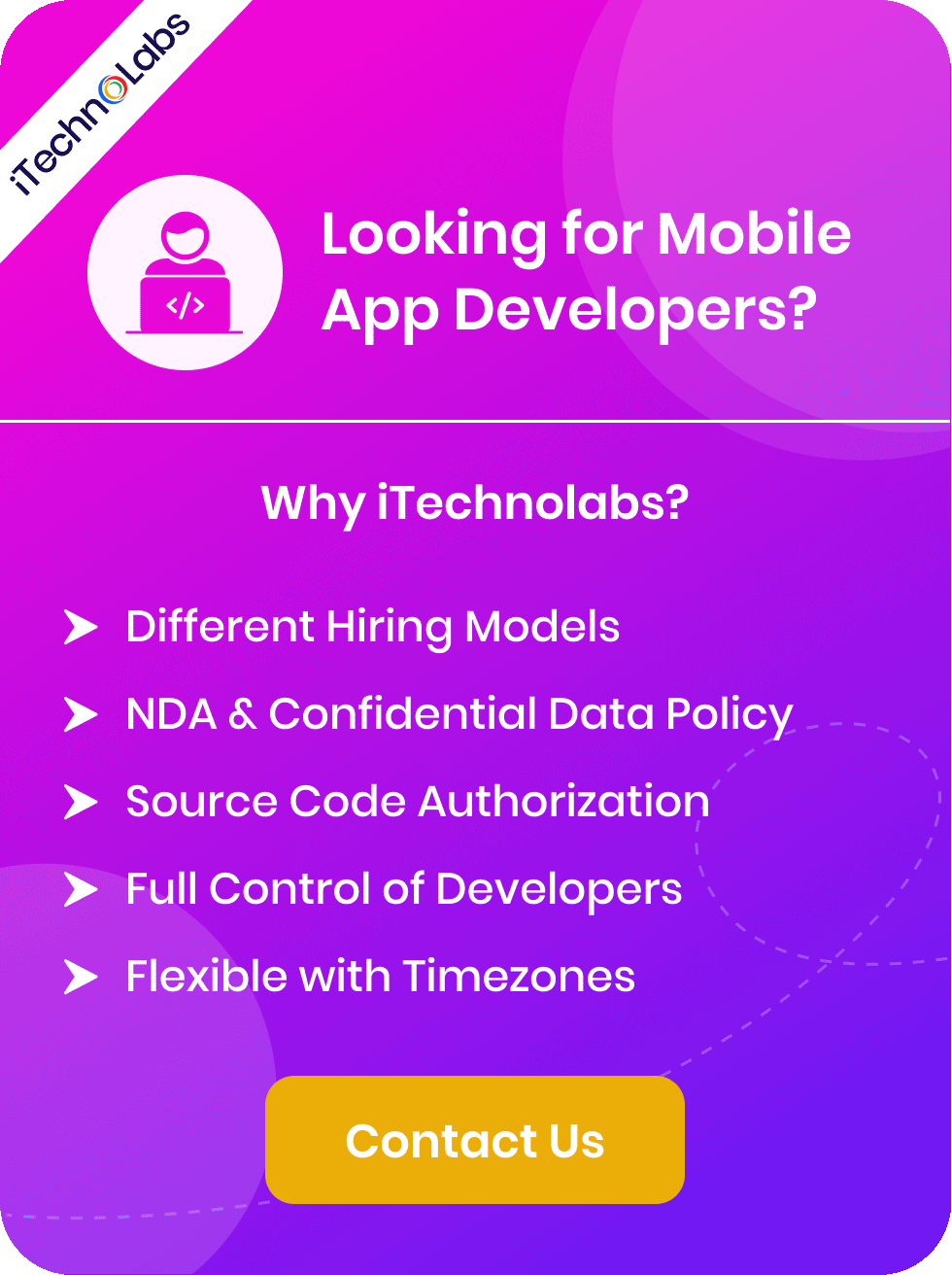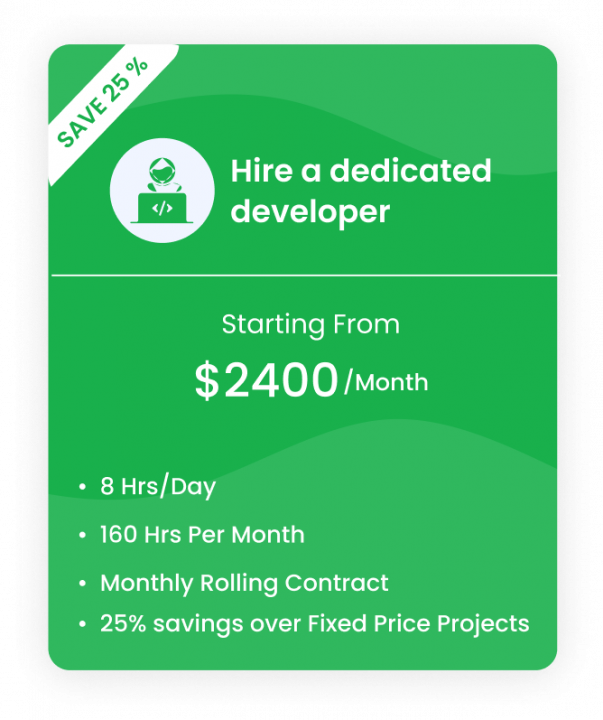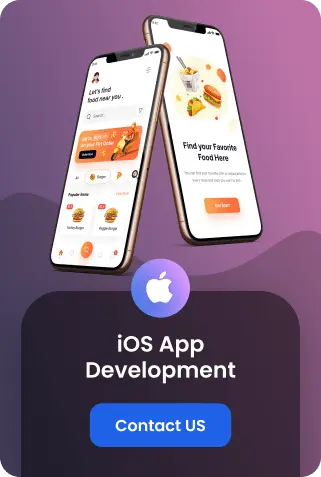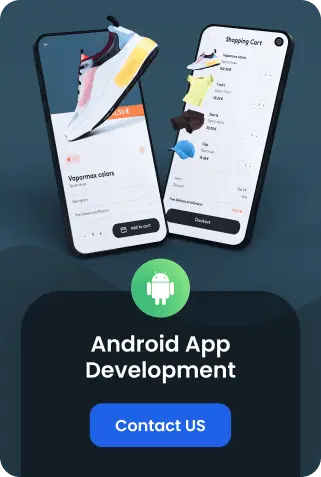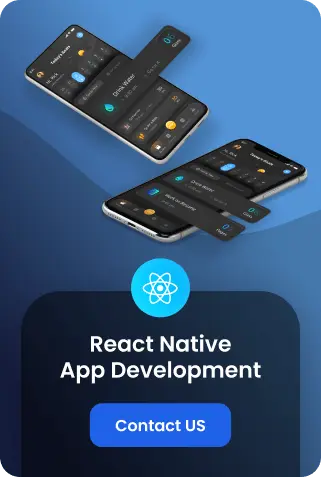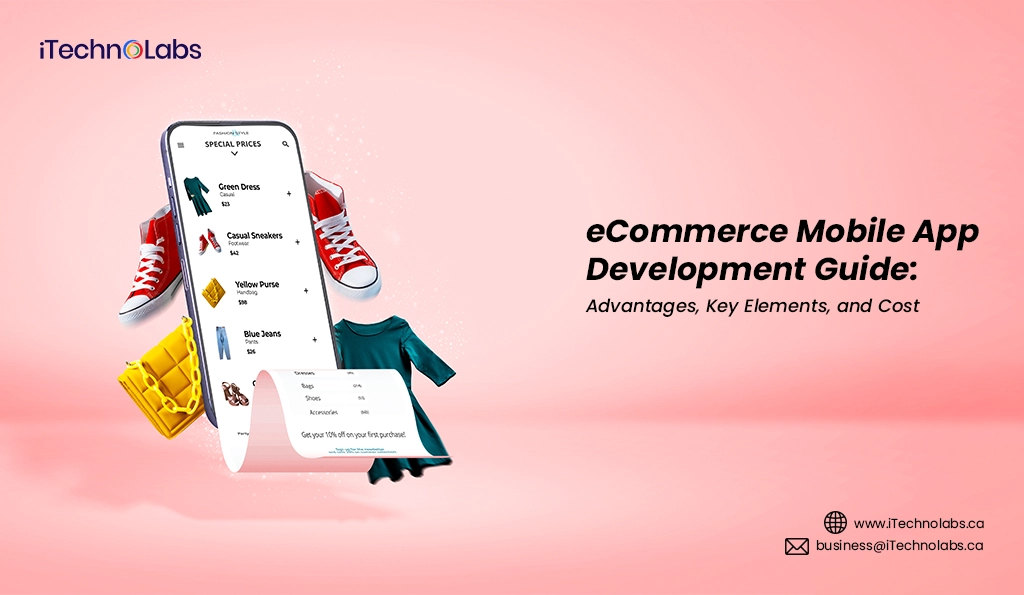The eCommerce industry has experienced unprecedented growth in recent years, as a growing number of people have started to prefer online shopping to meet their daily needs. This shift in consumer behavior has significantly increased the demand for eCommerce applications like 6th Street, which offers a seamless and convenient platform for users to explore and purchase a wide range of products from the comfort of their homes.
If you are contemplating the idea of developing an eCommerce application similar to 6th Street, a crucial question that might cross your mind is: How much will it cost to bring this idea to life? In this comprehensive guide, we aim to delve into the various elements that influence the development costs of such an app. From the initial design phase to the app’s launch and beyond, numerous factors play a role in determining the overall investment required. We’ll provide you with a detailed breakdown of these factors to help you gain a clearer understanding of what financial considerations to prepare for as you embark on this exciting venture.
Why Build an eCommerce Platform Like 6th Street?
Before we delve deeper into the financial implications of creating an eCommerce platform, it’s crucial to pause and comprehend the myriad of potential benefits and underlying reasons that make developing a platform similar to 6th Street an incredibly lucrative and rewarding venture. By entering into the realm of online commerce, one taps into the ever-expanding online shopping market, a sector that continues to grow as technology advances and consumer behaviors shift towards more digital interactions. Developing such a platform does not only offer access to this burgeoning market but also presents a unique opportunity to meet consumer demands in a way that is both convenient and innovative. It allows for the creation of a personalized shopping experience, leveraging data to understand and predict customer preferences, and tailoring the shopping experience to meet these expectations. This approach can significantly enhance customer satisfaction and loyalty, driving repeat business and fostering a strong brand reputation in the competitive digital marketplace.
Factors Influencing the Cost of Building an eCommerce App Like 6th Street
Now that we have established the potential benefits of developing an eCommerce platform like 6th Street, let’s dive into the various factors that affect the cost of building such an app. These factors are crucial to consider as they not only impact the initial investment required but also play a significant role in determining long-term maintenance and operational costs. Some key factors to consider include:
Platform Choice
The first and most crucial factor that affects the cost of building an eCommerce app is the platform choice. There are several options available, including developing a custom-built platform or utilizing existing eCommerce frameworks or platforms such as Shopify, Magento, or WooCommerce. Each option has its own set of advantages and limitations and will ultimately impact the development cost.
Number and Complexity of eCommerce-Specific Features
The next major factor to consider is the number and complexity of eCommerce-specific features you want to incorporate into your app. These may include product listings, search and filter options, shopping cart, payment gateway integration, order management system, customer reviews and ratings, shipping and delivery tracking, loyalty programs, etc. The more features you add, the more time and effort will be required to develop the app, thus affecting the overall cost.
Backend Infrastructure for Handling e-commerce Operations
An eCommerce app encompasses far more than its user-facing interface; it necessitates a strong backend infrastructure capable of managing a multitude of operations. These operations include inventory management, which ensures that stock levels are accurately reflected in real-time; order processing, which deals with the logistics of order fulfillment from placement to delivery; payment transactions, which must be securely processed to protect users’ financial information; and customer data storage and analysis, which is vital for personalizing the shopping experience and improving customer service. Developing and maintaining such a comprehensive infrastructure requires significant investment, both in terms of time and financial resources, which can substantially influence the overall development cost of the eCommerce application.
User Interface and UX Design Tailored for eCommerce Interactions
Creating an intuitive and user-friendly interface is absolutely essential for boosting customer engagement and increasing conversions on your eCommerce application. This task involves more than just making things look good; it entails developing a visually appealing user interface that is not only easy to navigate but also simple to understand and interact with. The goal is to make every aspect of the application accessible and enjoyable for the user, thereby enhancing their overall experience.
Furthermore, establishing a seamless and enjoyable user experience (UX) should be a top priority when developing an eCommerce app. UX design is not just about aesthetics; it focuses on optimizing the overall shopping experience by streamlining the user journey and eliminating any potential barriers that may hinder their interactions with the application. This could involve simplifying checkout processes, enhancing search functionality, or ensuring that the app is responsive and performs well on a variety of devices. By prioritizing these elements, developers can create a more engaging and efficient environment for shoppers.
This meticulous attention to detail in designing a visually appealing and seamless interface can significantly impact the development cost of an eCommerce app. However, the investment in high-quality UX/UI design is often justified by the return in terms of customer satisfaction, repeat business, and increased sales. In today’s competitive market, providing an outstanding user experience is a key differentiator that can set your eCommerce app apart from the rest. Therefore, it’s crucial to allocate sufficient resources and time to this aspect of app development to ensure that you’re offering the best possible experience to your users.
Geographic Location of the Specialized eCommerce Development Team
Another important consideration when developing an eCommerce app is the location of your development team. While it’s possible to work with a remote team, there are many benefits to having a specialized eCommerce development team located in the same geographical area as your business.
Firstly, having a local team means that they will have a better understanding of your target market and can tailor the app accordingly. They will have a better understanding of the cultural, social, and economic factors that may impact your users’ purchasing behavior. This can be especially important for international eCommerce apps targeting different regions.
Having a local team also means easier communication and collaboration. Time zone differences can often lead to delays in development and miscommunication if not properly managed. With a local team, you can easily schedule meetings and have real-time discussions about the progress of your app.
Also Read: Guide on eCommerce Mobile App Development
Must-Have Features for an eCommerce Platform Like 6th Street
Now that we’ve discussed the importance of user experience and the benefits of having a specialized eCommerce development team, let’s dive into some must-have features for an eCommerce platform like 6th Street.
User Registration and Profile Management
The first and foremost step in launching any successful eCommerce application is to implement a user registration and profile creation feature. This critical functionality serves multiple vital purposes. It not only lays the foundation for a personalized shopping experience by tailoring product recommendations and content according to each user’s preferences and past behaviors, but it also enables the business to gather crucial data. This data, ranging from basic demographic information to more complex behavioral insights, becomes a goldmine for crafting targeted marketing strategies. Furthermore, by analyzing this data, businesses can identify trends, preferences, and areas for improvement, thereby enhancing user engagement and satisfaction levels. This approach not only fosters a sense of community and belonging among users but also significantly contributes to the overall growth and success of the platform.
Home Screen with Featured Products and Deals
The home screen serves as the first impression for any eCommerce platform. It should be visually appealing, easy to navigate, and loaded with relevant information to entice users to explore further. One way to do this is by featuring popular or recently launched products, special deals, and promotions on the home screen. This not only grabs the user’s attention but also acts as a marketing tool, increasing the chances of making a sale. Additionally, businesses can implement personalized recommendations on the home screen based on each user’s browsing and purchase history, further enhancing the overall shopping experience.
Product Search and Filters
With a vast range of products available on eCommerce platforms, it can be overwhelming for users to find what they are looking for. Hence, implementing an efficient search function and filtering options is crucial. This allows users to easily narrow down their options based on specific criteria such as price, brand, size, color, etc. Furthermore, businesses can also use this data to gain insights into what products are in demand and adjust their inventory accordingly.
Order Tracking and History
Another essential feature of eCommerce platforms is the ability to track orders and view purchase history. This not only helps customers keep track of their current orders but also allows them to refer back to past purchases, making it easier for them to repurchase or leave reviews. Businesses can use this data to analyze which products are popular among their target audience and make informed decisions when restocking inventory.
Wishlist or Favorites Feature
A wish list or favorites feature allows users to save products they are interested in for future purchase. This not only serves as a reminder but also makes the shopping experience more personalized and convenient for the user. Additionally, businesses can use this data to understand which products have high demand and tailor their marketing strategies accordingly.
Push Notifications for Promotions and Updates
Push notifications are a powerful tool for eCommerce platforms to engage with their users. By sending out timely and relevant notifications, businesses can remind customers of abandoned carts, inform them about upcoming sales or promotions, and share updates on new products or restocked items. This not only increases customer engagement but also drives sales and brand awareness.
Customer Support via Chat or FAQ
A robust customer support system is crucial for eCommerce platforms to build trust and loyalty with their customers. This can be in the form of a chat function where users can directly communicate with a representative or an FAQ section that addresses common questions and concerns. By providing timely and helpful support, businesses can improve customer satisfaction and retention rates.
Social Media Integration for Easy Sharing and Discovery
Integrating social media platforms into an eCommerce website not only facilitates the effortless sharing of products and promotions but also transforms it into a formidable marketing apparatus. By skillfully leveraging the extensive user base of popular social media channels such as Facebook, Instagram, and Twitter, businesses are afforded the opportunity to reach a significantly wider audience, thereby substantially increasing brand visibility and awareness. This strategy allows for the organic growth of the brand’s online presence.
Furthermore, social media integration encourages users to engage directly with the brand by liking, commenting on, and sharing their favorite products with their own networks, which enhances customer interaction and loyalty. Additionally, the feature of social media feeds means users can serendipitously discover new products and offerings, which not only drives additional traffic back to the eCommerce platform but also potentially boosts sales. This symbiotic relationship between eCommerce sites and social media platforms creates a dynamic ecosystem where businesses can thrive by harnessing the power of digital word-of-mouth and targeted advertising, making social media an indispensable tool in the arsenal of digital marketing strategies for eCommerce success.
User-generated Content Section
Another fantastic way to boost customer satisfaction and retention rates is through the integration of user-generated content (UGC) on an eCommerce website. UGC refers to any type of content created by users or customers, including reviews, ratings, photos, videos, and social media posts about a brand or product.
Including UGC on an eCommerce site not only provides valuable information for potential customers, but it also adds a layer of authenticity and credibility to the brand. Seeing real customers share their experiences with a product or service can greatly influence a potential customer’s decision to make a purchase.
Moreover, UGC also helps generate buzz and social proof for a brand. When customers share positive reviews and showcase their purchases on social media, it acts as free advertising for the brand and can potentially attract new customers.
In-app Analytics for User Behavior Tracking
Another advantage of eCommerce platforms is the ability to track user behavior and gather valuable insights through in-app analytics. With the help of tools like Google Analytics, businesses can analyze data such as website traffic, conversion rates, and customer demographics.
This information can then be used to make data-driven decisions on product offerings, marketing strategies, and website optimization to improve the overall user experience and increase sales.
Additionally, in-app analytics can also track customer journeys and identify pain points or roadblocks in the purchasing process. By understanding how customers interact with a website, businesses can make necessary improvements to streamline the buying process and reduce cart abandonment rates.
Multi-language Support for Global Reach
With the rise of eCommerce, businesses now have the opportunity to reach a global audience and expand their customer base beyond geographical limitations. However, language barriers can often hinder this growth.
Fortunately, many eCommerce platforms offer multi-language support, allowing businesses to create localized versions of their websites in different languages. This not only helps cater to non-English speaking customers but also adds a personal touch and enhances the overall user experience for international customers.
Additionally, multi-language support also helps with SEO optimization in different regions, as websites targeting specific keywords in local languages are more likely to rank higher in search engine results pages.
Geo-location Based Offers and Services
Another effective way to personalize the eCommerce experience for customers is by leveraging geo-location data. With permission from users, businesses can track their location and offer targeted promotions or services based on their geographical location.
For example, a retail store with multiple physical locations can send push notifications to customers in the vicinity of a particular store, promoting a sale or new product launch. This not only increases foot traffic but also creates a sense of exclusivity for customers, as they feel like they are receiving a personalized offer.
Personalized Recommendations and Product Suggestions
One of the biggest advantages of eCommerce over traditional retail is the vast amount of customer data that can be collected and analyzed. This data can be used to create personalized product recommendations and suggestions for customers.
Machine learning algorithms can analyze a customer’s purchase history, browsing behavior, and demographic information to recommend products that they are likely to be interested in. This not only increases the chances of a purchase but also enhances the customer’s overall shopping experience by reducing the time and effort required to search for products.
Augmented Reality Try-Ons and Experiences
Augmented reality (AR) technology has opened up new possibilities for eCommerce businesses to provide a personalized and immersive shopping experience. With AR try-ons and experiences, customers can virtually try on products before making a purchase.
This is particularly useful for industries like fashion and beauty, where customers want to see how a product will look on them before buying it. By incorporating AR technology, eCommerce businesses can bridge the gap between online and offline shopping experiences, thereby increasing customer satisfaction and reducing return rates.
The Process of Developing an App Like 6th Street
Developing an eCommerce app like 6th Street requires a thorough understanding of the target audience and their needs, as well as utilizing the latest technology and industry best practices. The following are some key steps involved in the development process:
Market Research and Defining Objectives
The initial phase in creating a mobile application akin to 6th Street involves an in-depth market research process. This crucial step is aimed at gaining a comprehensive understanding of the target audience, including their tastes, preferences, and the prevailing trends within the eCommerce sector. By delving into these aspects, developers and strategists can precisely define the app’s objectives, tailoring it to meet the needs and desires of its intended users. Additionally, this research helps in pinpointing the essential features that are likely to attract potential customers and ensure their loyalty to the platform. Understanding the competitive landscape and consumer behavior plays a pivotal role in shaping an app that stands out in the crowded marketplace, ultimately contributing to its success.
Assembling the Development Team and Choosing the Platform
Once the objectives and target audience are defined, the next step is to assemble a team of skilled and experienced professionals. This team may comprise UI/UX designers, developers, project managers, content creators, and quality assurance specialists. Each member plays a crucial role in developing an app that not only meets but exceeds customer expectations. Additionally, selecting the most suitable platform for developing the app is crucial. The choice of platform depends on factors such as target audience, budget, and desired features. Developers can choose from native platforms like iOS or Android, hybrid options like React Native or Flutter, or cross-platform frameworks like Ionic and Xamarin.
Designing UI/UX and Writing the Code
The user interface (UI) and user experience (UX) serve as the backbone of any successful eCommerce application. The term UI refers specifically to the app’s visual elements and overall design aesthetics, encompassing everything from the layout to the color scheme and typography. On the other hand, UX focuses on the practical aspects of how users interact with the app, including ease of navigation, intuitiveness, and the overall journey from login to checkout.
Investing in an outstanding UI/UX design is not merely an option but a necessity for driving customer engagement and boosting retention rates. A thoughtfully designed UI paired with a seamless UX can make a significant difference in how potential customers perceive and utilize your app. This level of attention to detail can lead to increased user satisfaction, higher conversion rates, and ultimately, a more substantial bottom line for the business.
Once the UI/UX designs are meticulously planned and finalized, it marks the transition to the development phase. Here, the development team takes the reins, translating the visual concepts and interactive designs into functional code. This step is critical as it brings to life the static designs, transforming them into a dynamic, interactive eCommerce application. The coding process is intricate, involving the careful integration of various elements to ensure that the app is not only aesthetically pleasing but also robust, responsive, and secure for end-users.
Quality Assurance and Testing
Quality assurance (QA) and testing play a crucial role in the development process, ensuring that the final product meets the high standards set during the design phase. QA is a proactive approach to identifying potential issues or bugs before they impact end-users. It involves reviewing and testing all aspects of the app, including functionality, usability, security, and performance.
Testing is an essential part of the QA process, and it involves various techniques such as functional testing, regression testing, and user acceptance testing. These tests help to ensure that all features work as intended and that the app is user-friendly and bug-free. Any issues or bugs identified during this phase are reported back to the development team for fixing.
Deployment to App Stores and Post-launch Monitoring
Once the app has gone through rigorous testing and QA, it is ready for deployment to app stores. This involves submitting the app to various platforms such as the Apple App Store or Google Play Store. Each platform has its own set of guidelines and requirements, which must be met before an app can be published.
After the launch, it is crucial to monitor the app’s performance and gather user feedback to make necessary improvements. This can involve tracking downloads, ratings, and reviews, as well as implementing updates and bug fixes as needed. Continuously monitoring the app’s performance helps to ensure its success in the competitive world of mobile apps.
Read More: Role of AI in Retail and E-commerce Industry
How much does it cost to build an Online Shopping app like 6th Street?
The cost of building an online shopping app like 6th Street varies widely depending on several factors, including the app’s complexity, the features you choose to include, the geographic location of your development team, and whether you opt for a custom design or use a pre-built template. Generally, the development cost can range from $20,000 to over $100,000. For a basic app with minimal custom features and a simple UI/UX design, you might be looking at the lower end of this spectrum. However, for a more complex application incorporating advanced features such as AI recommendations, AR try-on, and high-level security, costs can easily escalate to the higher end or beyond. It’s also important to factor in the ongoing costs for app maintenance, updates, server costs, and marketing.
- Complexity of the App: The complexity level of the application directly influences its development cost. Simple apps, which might include basic functionalities and straightforward designs, can range from $20,000 to $50,000. On the other hand, more advanced applications boasting extensive features, sophisticated algorithms, or unique technologies could easily exceed $100,000 due to the additional time and expertise required for their development.
- Features and Functionalities: The scope of features and functionalities present in the app plays a crucial role in determining the cost. Basic features such as product listings, user registration, and search capabilities might keep the costs comparatively lower. However, integrating advanced features like AI-driven recommendations for a personalized user experience, augmented reality (AR) try-on capabilities for a more interactive experience, and secure payment gateways for safe transactions can significantly bump up the development price due to the complexity and additional security measures needed.
- Design Elements: The design aspect of the app, including its user interface (UI) and user experience (UX) design, can also affect the overall cost. Opting for a simple, user-friendly design might help in keeping the costs down. However, if the app requires custom, intricate designs or animations that enhance user engagement, the budget will inevitably increase to accommodate the extra work in making the app not only functional but also aesthetically pleasing.
- Geographic Location of the Development Team: The development cost is also greatly influenced by the geographic location of the development team. Labor costs vary significantly across different regions of the world. For instance, hiring a development team in Eastern Europe might offer more cost-effective solutions without compromising on quality, compared to the higher rates typically charged by developers in North America or Western Europe.
- Maintenance and Updates: It’s important to consider post-launch costs which include maintenance, updates, bug fixes, and server charges. These ongoing costs can amount to 15-20% of the initial development cost annually and are crucial for ensuring the app remains functional, secure, and up-to-date with the latest technological advancements or user requirements.
- Marketing and Promotion: Successfully launching the app is just the first step; budgeting for the marketing and promotion of the app is equally crucial for its success. The overall cost can be significantly impacted by the strategies employed to promote the app, including social media marketing, search engine optimization, influencer collaborations, and more. Effective marketing not only helps in reaching the target audience but can also significantly boost the app’s visibility and user engagement.
Suggested: How Much Does it Cost to Create An App
How can iTechnolabs help you build an Online Shopping app like 6th Street?
iTechnolabs recognized as a premier ecommerce app development company, stands ready to assist you in creating a successful online shopping app akin to 6th Street. With a dedicated team of seasoned developers and innovative designers, we provide comprehensive support throughout the entire app development journey. From the initial ideation phase, through meticulous planning and development, to the final launch and beyond, iTechnolabs ensures that your project receives the personalized attention and expertise necessary to stand out in the competitive digital marketplace. Let us help you transform your vision into a reality, crafting an app that not only meets but exceeds your expectations.
Here are some ways in which iTechnolabs can contribute to creating an outstanding online shopping app for your business:
- Expertise and Experience: Our team at iTechnolabs has extensive knowledge and experience in developing mobile apps for various industries, including e-commerce. We understand the latest trends, technologies, and user preferences in the online shopping industry.
- Customized Solutions: We believe that every business is unique, and therefore, our app development process is tailored to meet your specific business needs and goals. Our team will work closely with you to understand your requirements and develop a customized solution that aligns with your brand image and values.
- User-Centric Design: At iTechnolabs, we prioritize user experience above everything else. We will ensure that the app’s design is intuitive, visually appealing, and easy to navigate, providing a seamless shopping experience for your customers.
- Robust Functionality: We will build an app with robust functionality that provides all the essential features and tools to make the shopping process convenient for your customers. From product browsing and filtering to secure payment options and order tracking, we will ensure that your app meets all the necessary requirements of an online shopping platform.
- Scalability and Flexibility: Our app development process focuses on scalability, ensuring that your app can handle a growing number of users and products. We also provide flexibility in terms of adding new features or making changes according to your business’s evolving needs.
- Quality Assurance: At iTechnolabs, we follow a rigorous quality assurance process to ensure that your app is free from any bugs or glitches. We conduct thorough testing on various devices and platforms to ensure the app’s functionality, security, and compatibility.
Are you planning to build an e-commerce app like 6th street?
Choosing iTechnolabs for your online shopping app development, akin to the renowned 6th Street platform, brings numerous benefits that significantly bolster your business’s digital presence and enhance customer engagement. iTechnolabs’ prowess in creating fluid and user-friendly online shopping experiences means your app will not only draw in a broad audience but will keep them coming back, thereby elevating your brand’s visibility and extending your market reach.
Engaging with iTechnolabs allows you to leverage their comprehensive understanding of the digital landscape, incorporating the latest trends and technologies to ensure your app stands out. Their commitment to excellence ensures that your shopping app is intuitive, secure, and feature-rich, aligning with user expectations and preferences. This strategic partnership can lead to a notable increase in sales, improved customer satisfaction rates, and a robust online presence that distinguishes your brand in a crowded digital marketplace. By investing in such a collaboration, you’re setting your business up for greater success and a competitive edge in the ever-evolving world of e-commerce.
- Market Expertise: With profound expertise in developing shopping apps, iTechnolabs brings invaluable insights into market trends, consumer behavior, and effective strategies to engage online shoppers. Drawing from their experience, your app will be designed not just to compete but to stand out in the bustling digital marketplace.
- Enhanced User Experience: Leveraging our user-centric design philosophy, your app will offer an unparalleled shopping experience mirroring the effectiveness and appeal of 6th Street. This focus on creating an intuitive and enjoyable user journey ensures higher customer satisfaction and retention rates.
- Advanced Technology Integration: Our commitment to utilizing cutting-edge technology means your shopping app will feature the latest in app development, from AI-powered recommendations to secure and fast payment gateways, placing your business at the forefront of digital retail.
- Strategic Brand Amplification: By tailoring the app to reflect your unique brand identity, iTechnolabs aids in amplifying your brand message, thus attracting and retaining a loyal customer base. This bespoke approach ensures that your online shopping app is not just another marketplace but a direct extension of your brand ethos.
- Comprehensive Support and Maintenance: Understanding the dynamic nature of digital platforms, iTechnolabs offers ongoing support and maintenance, ensuring your app remains updated with the latest features and security measures. This continuous engagement guarantees your app’s relevance and reliability in the evolving e-commerce landscape.
Important: How to Build an Auction Website like eBay for Online Bidding?
Conclusion:
Through a combination of innovative design, advanced technology integration, strategic brand amplification, and comprehensive support and maintenance, your online shopping app will be equipped to succeed in the competitive digital marketplace. With iTechnolabs as your partner, you can look forward to elevating your business and offering customers an exceptional shopping experience that reflects your unique brand identity.
FAQs
How much does the 6th Street app cost?
The cost of developing a 6th Street shopping app can vary widely, depending on several critical factors including the range and complexity of features you wish to implement, the intricacy of the app’s design, and the need for compatibility across different platforms (iOS, Android, web, etc.). To provide you with the most accurate estimate, we recommend scheduling a consultation with our team. During this consultation, we can discuss your specific vision for the app, any unique functionalities you want to include, and any particular design elements you’re considering. This will enable us to tailor a quote that precisely fits your project’s needs.
How long does it take to develop an app like 6th Street?
The development timeline for a 6th Street shopping app can vary depending on the complexity and scope of your project. Generally, it takes an average of 3-4 months to develop a basic shopping app with essential features and functionalities. However, if you wish to include more advanced features or customized design elements, the timeline may extend by a few weeks or even months. During our consultation, we can discuss your project requirements in more detail and provide a realistic timeline for development.
What kind of market research is necessary before developing an eCommerce app like 6th Street?
To ensure the success of your eCommerce app, it is crucial to conduct thorough market research before development. This includes analyzing your target audience, their preferences and shopping habits, as well as researching your competitors’ strategies and offerings. Understanding the current market trends and opportunities can help you make informed decisions when developing your app and positioning it in the marketplace. Our team at iTechnolabs can assist you with market research and provide valuable insights to help make your app stand out in the crowded eCommerce industry. So, it is highly recommended to conduct comprehensive market research before starting the development process.


